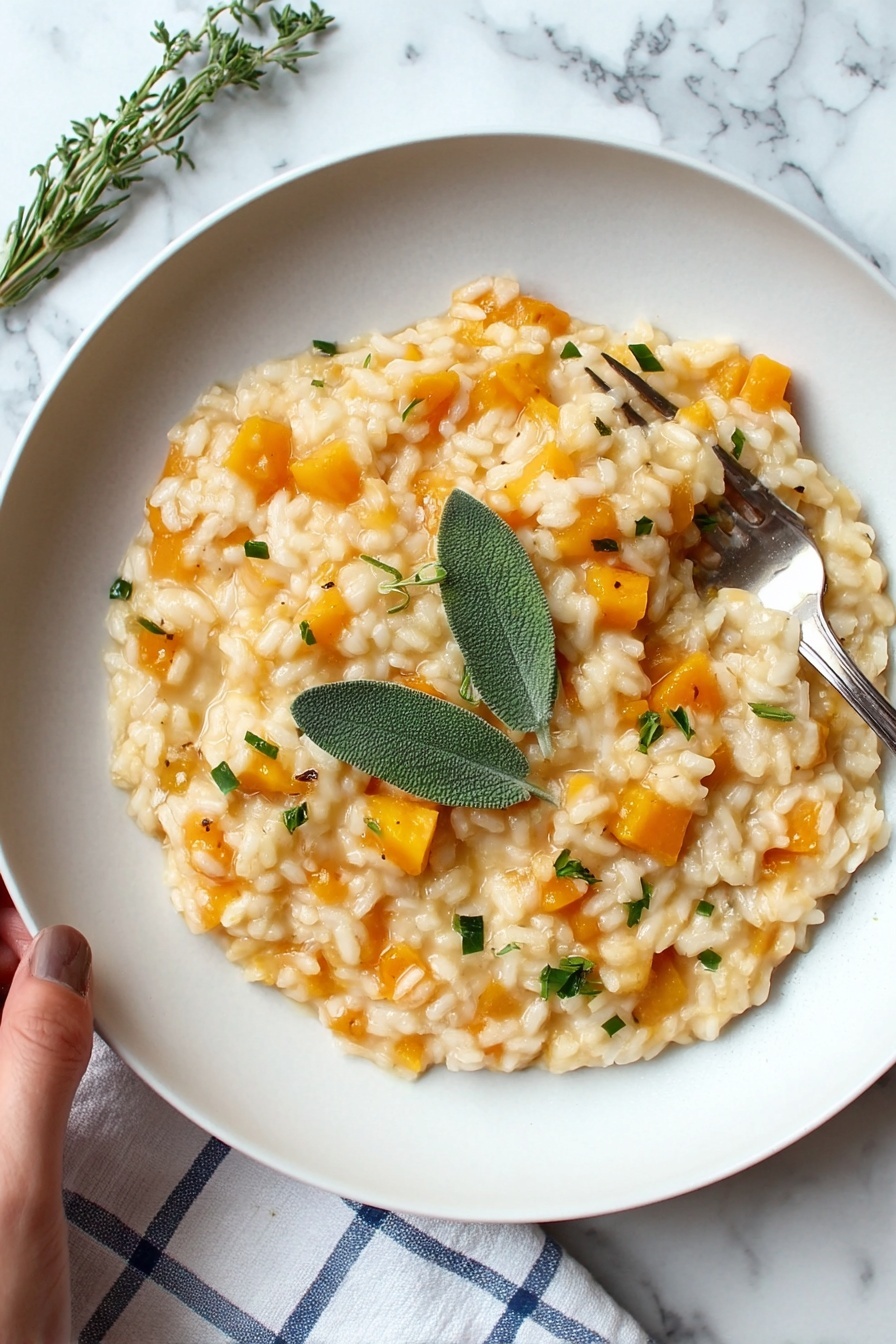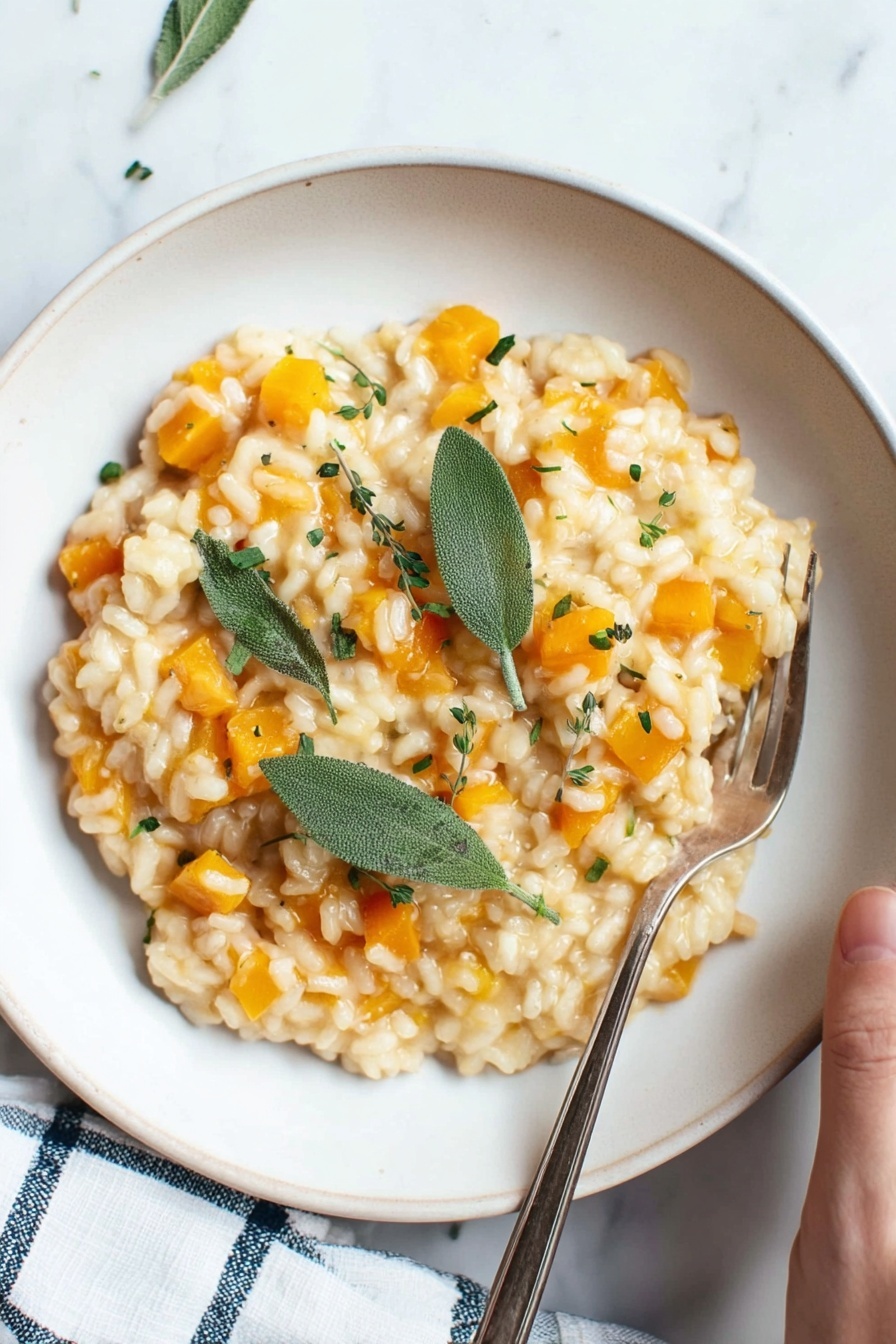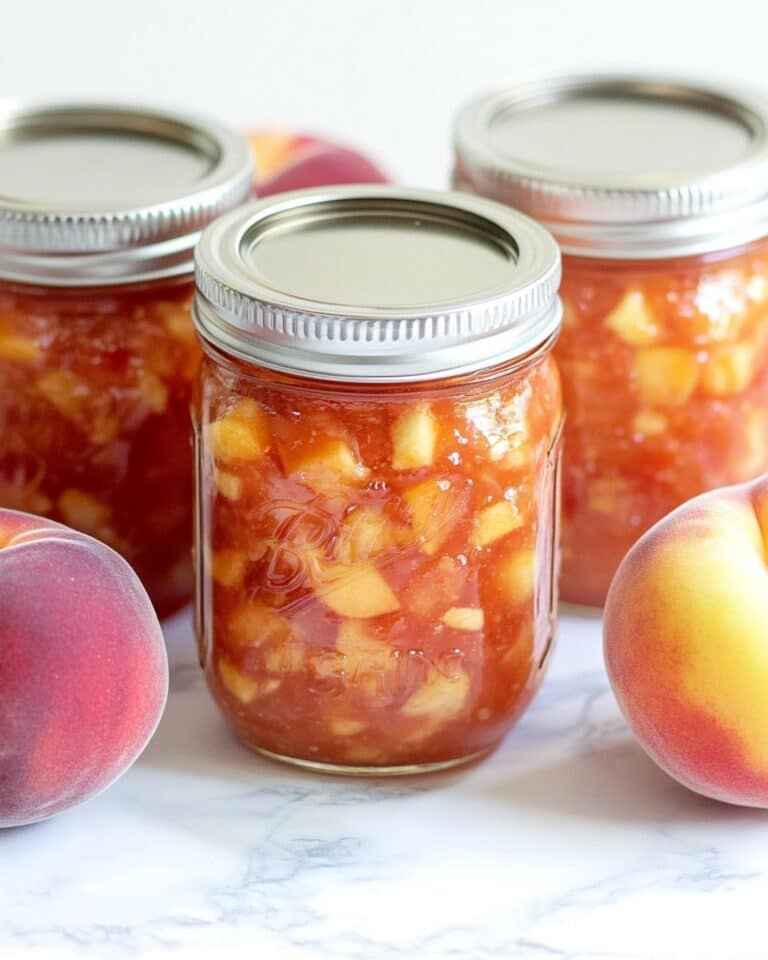If you’re searching for that perfect cozy comfort food with a twist, then this Butternut Squash Risotto Recipe is going to be your new best friend. Creamy, rich, and just the right balance of sweet squash and savory goodness, it’s one of those recipes that feels fancy but is totally doable on any weeknight. I absolutely love how this turns out every time, and I’m excited to share all my tips to help you nail it in your kitchen too.
Why You’ll Love This Recipe
- Simple Ingredients: You don’t need fancy or hard-to-find items—just pantry staples and fresh squash.
- Perfect Creamy Texture: The slow addition of broth creates that silky risotto I know you love.
- Comforting and Elegant: This risotto impresses guests while feeling like a warm hug on a plate.
- Versatile and Customizable: You can easily tweak herbs, cheese, or add-ins to fit your mood or pantry.
Ingredients You’ll Need
All the ingredients in this Butternut Squash Risotto Recipe work beautifully together to create deep flavor and luscious creaminess. I recommend picking a ripe butternut squash that’s firm and free from soft spots—this really makes a difference in taste and texture.
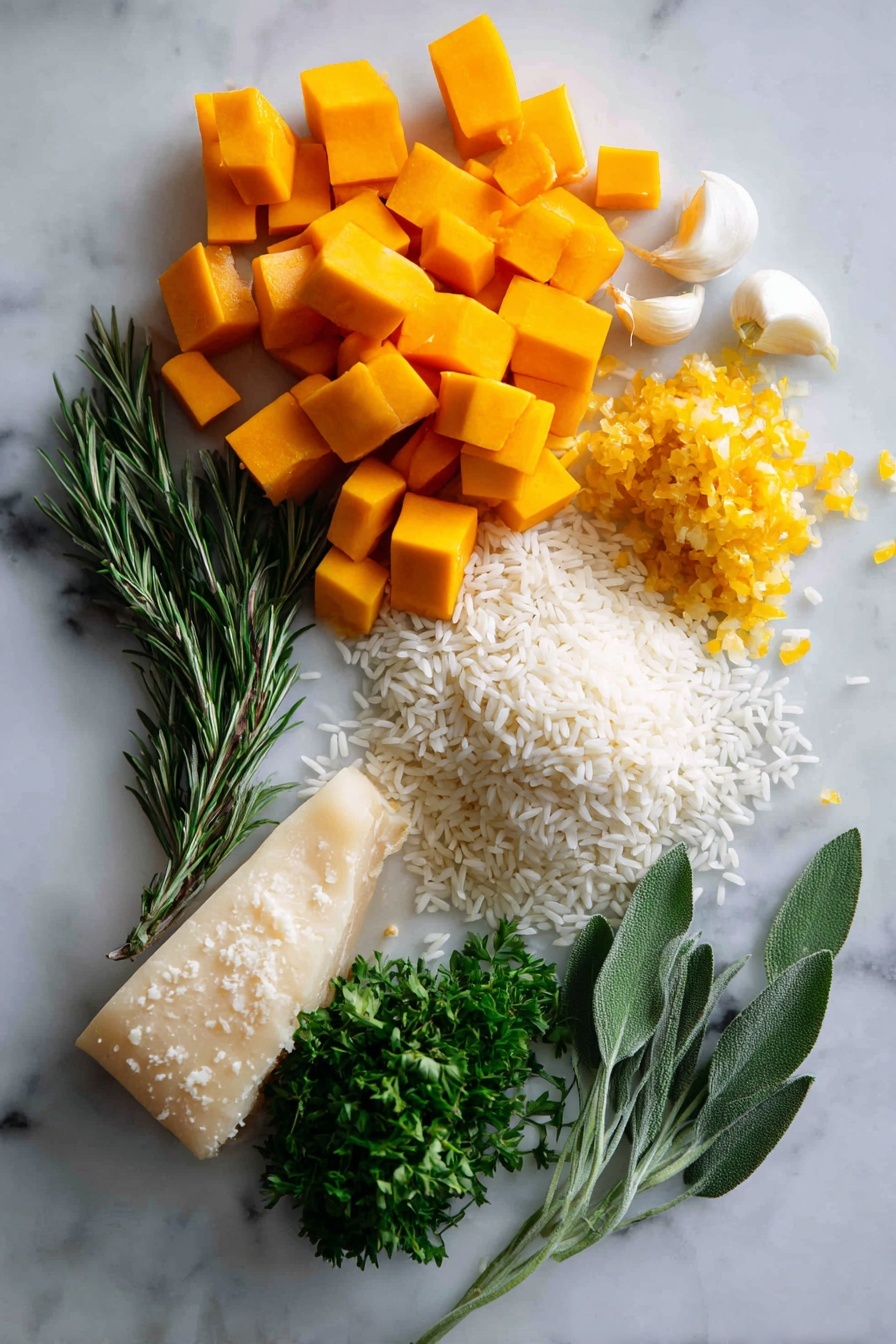
- Extra-virgin olive oil: Adds richness and is your base flavor for sautéing the onions and squash.
- Yellow onion: Provides sweetness and depth once caramelized gently.
- Sea salt: Enhances all the natural flavors; use it carefully throughout cooking.
- Freshly ground black pepper: Adds just enough bite and warmth.
- Cubed butternut squash: The star of the dish—roasted or sautéed, it melts into the risotto.
- Garlic cloves: For that subtle aromatic punch—don’t skip!
- Minced rosemary or sage: Both herbs complement butternut squash wonderfully; I like rosemary for an earthy tone.
- Arborio rice: The key to creamy risotto thanks to its sticky starch content.
- Dry white wine: Adds acidity and complexity; it cooks down leaving a lovely flavor behind.
- Vegetable broth (warmed): Adding it warm prevents the cooking from slowing down and keeps risotto creamy.
- Chopped parsley or small sage leaves (optional): Fresh garnish that bursts with color and fresh herbal notes.
- Grated pecorino or Parmesan cheese (optional): For an irresistible savory finish that your family will go crazy for.
Variations
One of the things I really enjoy about this Butternut Squash Risotto Recipe is how easy it is to play with. Over the years, I’ve customized it with a few tweaks depending on the season or what I have in my fridge, and it never disappoints.
- With sautéed mushrooms: Adding mushrooms makes it heartier — it’s a family favorite that feels like a meal by itself.
- Herb swap: Sometimes I switch rosemary for fresh sage or thyme to add different herbal notes.
- Dairy-free version: Skip the cheese and finish with a drizzle of good olive oil; still creamy and comforting.
- Nutty crunch add-in: Toasted pine nuts or walnuts sprinkled on top add a delightful texture contrast.
How to Make Butternut Squash Risotto Recipe
Step 1: Sauté the Aromatics and Butternut Squash
Start by heating a tablespoon of olive oil in a large skillet over medium heat. Add the chopped yellow onion along with a pinch of sea salt and a few grinds of black pepper. Cook this gently for about 2 to 3 minutes until the onion softens—no browning needed here, just sweat the sweetness out. Then, toss in the butternut squash cubes and cook for around 6 to 8 minutes, stirring occasionally. You want them to start softening and getting a bit golden, but not mushy yet.
Step 2: Add Garlic, Herbs, and Rice
Once your squash is tender, add the finely chopped garlic and minced rosemary or sage. Stir these in and let them cook for about a minute until fragrant—this part always fills my kitchen with the most incredible scents. Next, pour in the Arborio rice and stir to coat every grain with that beautiful olive oil and flavor from the pan. Let the rice toast just a bit, about a minute. This step helps develop the risotto’s classic creamy texture.
Step 3: Deglaze with White Wine
Pour in the dry white wine and give everything a good stir. Let it simmer and reduce for about 1 to 3 minutes. You’ll notice the alcohol cooking off and the rice soaking up some of that lovely tartness. This step gives the risotto a depth of flavor that really makes it sing.
Step 4: Slowly Add Warm Broth and Stir
Now the real risotto magic begins. Start adding the warmed vegetable broth in ¾ cup increments, stirring almost constantly. You want each batch of broth to be fully absorbed before adding more. This slow addition and stirring release the starches in the Arborio rice, creating that creamy, luscious texture risotto is famous for. Continue doing this until your butternut squash is tender and the risotto is soft and perfectly creamy—this usually takes about 30 to 40 minutes.
Step 5: Final Seasoning and Serving
Give it a taste and add more salt and pepper if needed—seasoning is key! At this point, you can sprinkle in some grated pecorino or Parmesan cheese if you like, stirring it through for extra richness. Finally, garnish with fresh chopped parsley or a few sage leaves. Voila! Your Butternut Squash Risotto is ready to wow everyone at your table.
Pro Tips for Making Butternut Squash Risotto Recipe
- Keep Broth Warm: Using warm broth helps the rice cook evenly and speeds up absorption, keeping your risotto creamy, not sticky.
- Constant Stirring: Stirring frequently releases starch from the rice for creaminess without burning the bottom—trust me, it’s worth the arm workout!
- Don’t Rush Adding Broth: Adding too much broth too fast can make the texture runny; patience is key for perfect risotto.
- Taste as You Go: Always taste your risotto as you cook to adjust seasoning and texture—you want it just tender but still slightly firm to the bite.
How to Serve Butternut Squash Risotto Recipe
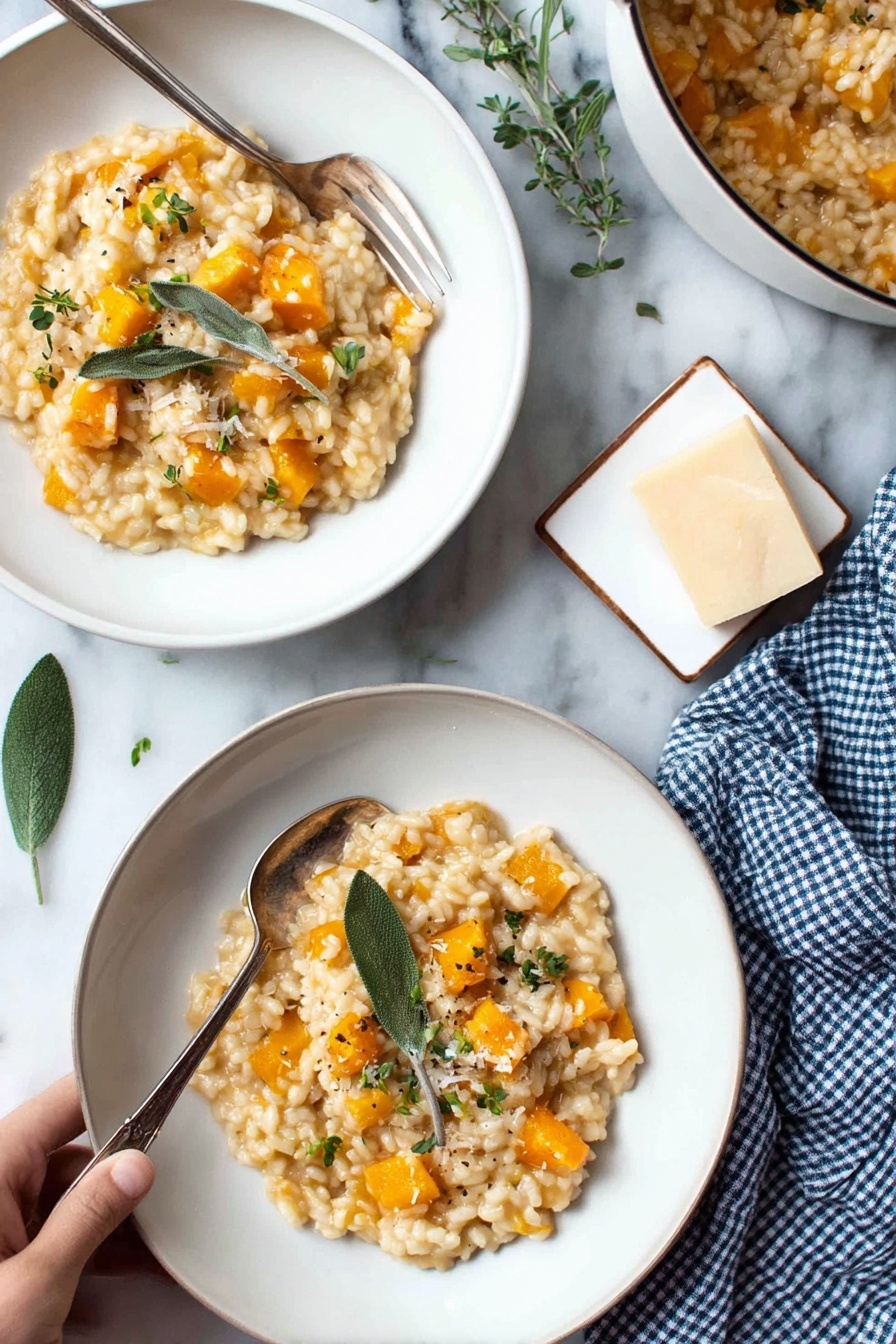
Garnishes
I love serving this risotto with fresh chopped parsley because it adds a pop of color and fresh brightness. Sometimes I scatter small sage leaves on top—roasted slightly if I’m feeling fancy—to echo the herb flavor in the dish. And of course, a generous handful of grated Parmesan or pecorino cheese on the side is a must for me.
Side Dishes
For a full meal, I often pair this Butternut Squash Risotto Recipe with simple roasted chicken or a crisp green salad with lemon vinaigrette. It also works beautifully alongside steamed or roasted veggies like Brussels sprouts or asparagus for a vegetarian feast.
Creative Ways to Present
If you want to impress guests, try serving individual portions in small shallow bowls, topped with a fresh herb sprig and a drizzle of high-quality olive oil. For Thanksgiving or special dinners, a ring mold can help shape the risotto into neat rounds, making your plating look restaurant-worthy in no time.
Make Ahead and Storage
Storing Leftovers
Leftover risotto keeps well in an airtight container in the fridge for up to 3 days. When storing, make sure it’s cooled completely before sealing the container to prevent condensation and sogginess. The texture will firm up but don’t worry—we’ll get it creamy again on reheating.
Freezing
I’ve frozen butternut squash risotto a few times, and it works okay, though the texture can be slightly less creamy after thawing. If you want to freeze, portion it out into freezer-safe bags or containers, leaving some space for expansion, and use within 1 month for best flavor.
Reheating
To reheat, I add a splash of warm broth or water and gently warm it over low heat while stirring constantly. This revives the creamy texture wonderfully. Avoid microwaving directly without adding liquid, as that can dry it out.
FAQs
-
Can I use a different type of squash for this risotto?
Absolutely! While butternut squash gives a sweet, nutty flavor, you can substitute with kabocha or delicata squash for slightly different textures and taste. Just adjust the cooking time depending on the squash’s firmness.
-
What if I don’t have white wine?
No worries. You can substitute with a splash of extra broth mixed with a little lemon juice or apple cider vinegar to mimic the acidity wine adds. Don’t skip this step completely, as it brightens the flavors beautifully.
-
How do I know when my risotto is done?
The rice should be tender but still have a slight bite in the center, which chefs call “al dente.” The liquid should mostly be absorbed creating a creamy texture that isn’t dry or soupy. Taste testing is the best guide here!
-
Can I make this risotto vegan?
Yes! Skip the cheese or use a vegan Parmesan alternative to keep it dairy-free. Also, make sure your broth is vegetable-based. The flavor is still rich and satisfying without the dairy.
Final Thoughts
This Butternut Squash Risotto Recipe holds a special place in my heart because it’s both a comfort food and a little celebration of fall’s best flavors. I used to struggle with making risotto that wasn’t gluey or mushy, but when I discovered the slow broth addition and gentle stirring, it all clicked. You’ll enjoy the process as much as the results, I promise. Give this recipe a try as you wind down your day or want to impress friends without spending hours in the kitchen—it’s truly a win every time.
Print
Butternut Squash Risotto Recipe
- Prep Time: 15 minutes
- Cook Time: 40 minutes
- Total Time: 55 minutes
- Yield: 4 servings
- Category: Main Course
- Method: Stovetop
- Cuisine: Italian
- Diet: Vegetarian
Description
This Butternut Squash Risotto is a creamy and comforting dish featuring tender butternut squash cubes cooked with Arborio rice, garlic, and fragrant rosemary. Slow-cooked on the stovetop with warm vegetable broth and finished with optional grated pecorino or Parmesan cheese, this risotto offers a perfect balance of sweet, savory, and herbaceous flavors. Ideal for a cozy meal, garnished with fresh parsley or sage leaves for an elegant touch.
Ingredients
Main Ingredients
- 1 tablespoon extra-virgin olive oil
- 1 medium yellow onion, chopped
- ½ teaspoon sea salt, plus more to taste
- Freshly ground black pepper
- 2 cups cubed butternut squash, ¼-inch cubes
- 2 garlic cloves, finely chopped
- 1 teaspoon minced rosemary or sage
- 1 cup uncooked Arborio rice
- ½ cup dry white wine
- 4 cups warmed vegetable broth
Optional Garnishes
- Chopped parsley or small sage leaves
- ½ cup grated pecorino or Parmesan cheese
Instructions
- Heat the aromatics: In a large skillet, heat the extra-virgin olive oil over medium heat. Add the chopped onion along with ½ teaspoon sea salt and several grinds of freshly ground black pepper. Cook for 2 to 3 minutes until the onion becomes soft and translucent.
- Cook the butternut squash: Add the ¼-inch cubed butternut squash to the skillet with the onions. Cook for 6 to 8 minutes, stirring occasionally, until the squash begins to soften but still holds its shape.
- Add garlic, herbs, and rice: Stir in the finely chopped garlic and minced rosemary or sage. Then add the Arborio rice, stirring to coat it well with the oil and aromatics. Let it cook for about 1 minute to lightly toast the rice.
- Deglaze with wine: Pour in the ½ cup dry white wine. Stir and allow it to cook down for 1 to 3 minutes until mostly evaporated and absorbed by the rice, enhancing the risotto’s flavor base.
- Add warm broth gradually: Begin adding the warmed vegetable broth in increments of ¾ cup at a time. Stir continuously, allowing each addition of broth to be fully absorbed before adding the next. Continue this process until the risotto is creamy and the butternut squash is tender, which should take about 30 minutes.
- Season and finish: Taste and adjust seasoning with additional salt and pepper if needed. Remove from heat once the texture is creamy and the rice is tender but still has a slight bite.
- Garnish and serve: Garnish with chopped parsley or small sage leaves for freshness, and serve with grated pecorino or Parmesan cheese if desired for a rich, savory finish.
Notes
- Use warmed vegetable broth to help the risotto cook evenly without slowing down the temperature of the rice.
- Stirring continuously helps release the starches from the rice, resulting in a creamy texture.
- You may substitute rosemary for sage depending on your flavor preference.
- For a richer risotto, consider finishing with a small knob of butter or a splash of cream along with the cheese.
- Dry white wine can be omitted or replaced with extra broth if avoiding alcohol.
Nutrition
- Serving Size: 1 cup
- Calories: 320
- Sugar: 4g
- Sodium: 520mg
- Fat: 9g
- Saturated Fat: 2g
- Unsaturated Fat: 7g
- Trans Fat: 0g
- Carbohydrates: 50g
- Fiber: 4g
- Protein: 7g
- Cholesterol: 5mg

